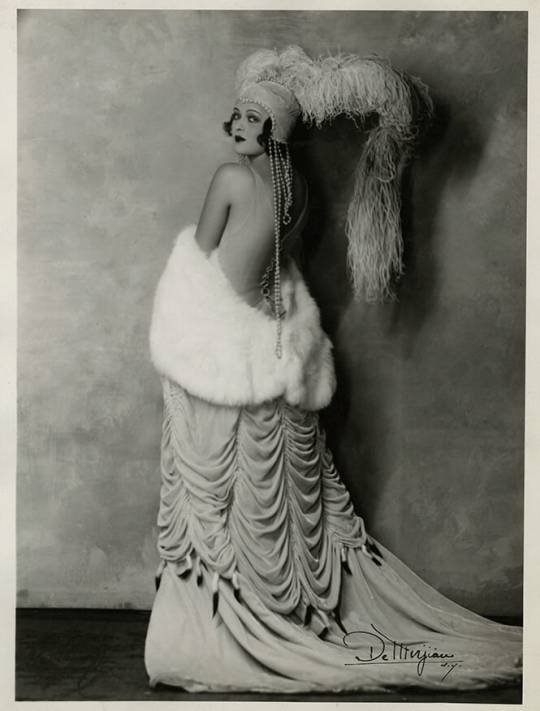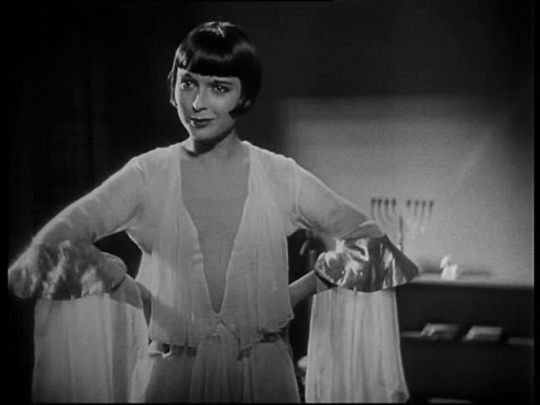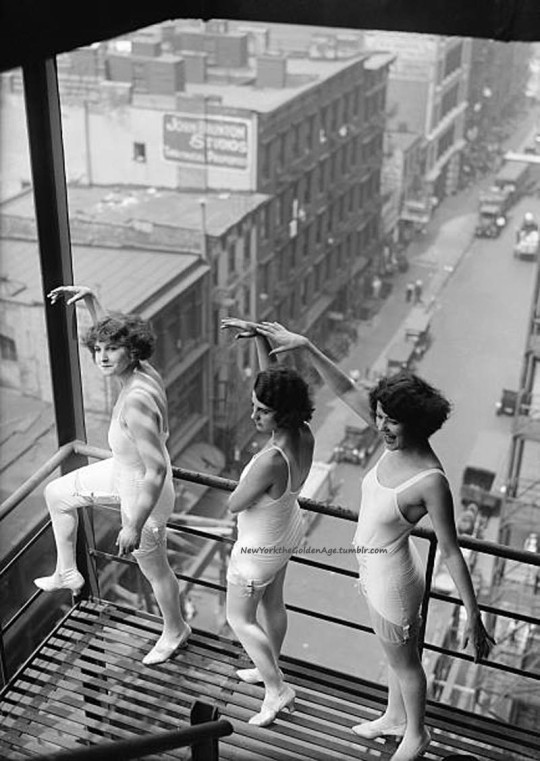#Ziegfeld Theater
Explore tagged Tumblr posts
Text

Joseph Urban, Two Mural Panels for the Ziegfeld Theatre: The Joy of Life, 1927. Oil on canvas. Above, as seen at the Cleveland Museum of Art exhibit on Jazz Age art and design.
Urban was also the architect of the theater. He said he wanted it to be a place where "people coming out of crowded hours and through crowded streets, may find life carefree, bright and leisured."

Top photo: patrons.org Bottom photo: .themagazineantiques.com
#vintage New York#1920s#Joseph Urban#mural#wall mural#Ziegfeld Theater#1920s art#Art Deco#American Art Deco#design#modern design#theater design
214 notes
·
View notes
Text







#2007 #Sweeney Todd #premiere #NY #December 3, 2007 #Ziegfeld Theater
1 note
·
View note
Photo
Apparently Tumblr hasn’t sprung forward yet, so my queued posts are off by one hour. To hold you until then, here’s the old (new) Ziegfeld Theater in 1927.

February 2, 1927 The new Ziegfeld Theatre opened with the Ziegfeld-produced hit musical “Rio Rita”, with a cast of over 100. From Broadway Remembered, FB.
351 notes
·
View notes
Text

Kae Carroll in the Ziegfeld Follies, c. 1925-1927
#kae carroll#vintage#ziegfeld follies#the ziegfeld follies#jazz age#broadway#new york#nyc#theater#costume#fashion#stage#1920s#roaring twenties#roaring 20s#pretty#dreamy#aesthetic#opulence#history#actress#dancer#revue#ziegfeld girl
798 notes
·
View notes
Text

Justine Johnstone photographed by Ira L. Hill, 1918. From my collection.
#justine johnstone#flapper#old hollywood#silent film stars#vintage#ziegfeld girl#ziegfeld follies#1918#<3#ira l hill#ira hill#1910s photography#1910s fashion#theater#my collection
4 notes
·
View notes
Photo

Sybil Carmen (1896 - 1929) American actress, dancer, and Ziegfeld girl
https://www.redbubble.com/people/princessbunhead/works/145320285-sybil
3 notes
·
View notes
Text
My grandfather was a contemporary of George M Cohen and Florenz Zeigfield.
My dad is the product of my grandfather's 3rd married. My grandfather was born in 1875. My dad was born in 1933. I'm the baby of my family.
He was a theatrical manager. He had been treasurer for the National Theater in Washington and was a play producer in NYC.
At the end of WWI, the NYC Police Reserves created a "theatrical regiment." And my grandfather - Jed F Shaw - was captain of Company G. George M Cohen was in Company A. Florenz Ziegfeld is listed as a member along with many others.
It's crazy what you find when you do genealogy. I knew he was a play producer in NY and other places. But - I didn't realize who he was a contemporary with. It's one thing to know facts. It's another to know facts in context. According to his obit in the NY times, he apparently 'assisted' John Barrymore, George Arliss and someone famous with the last name Hart - who was probably Lorenz Hart.
This is super funny to my son as he has come to believe our family has Forest Gumped our way through history. Always in the background of famous people and events.

1 note
·
View note
Text



Cameron Diaz at the World premiere of 'Bad Teacher' held at The Ziegfeld Theater in New York City on 20th June 2011.
87 notes
·
View notes
Text

Hilda Ferguson was born Hildegarde Gibbons on January 16, 1903 in Baltimore, Maryland. Hilda was one of six children. When she was a child she studied dancing and acted in local theater productions. She married Robert Ugarte, a dentist, on June 2, 1919. The following year she gave birth to a daughter named Emily. Soon after she separated from her husband and moved to New York City. Hilda made her Broadway debut in the 1922 show Music Box Revue. In March of 1923 her roommate, actress Dot King, was found murdered. The story made headlines all over the country and she was interviewed by the police numerous times. Dot's murder has never been solved. Hilda was asked to join the Ziegfeld Follies in the Fall of 1923. She had a stunning figure and was known for her "shimmy" dancing. Her admirers had nicknamed her "The Body". Hilda's many lovers included actor George Raft, composer Arthur Gershwin, and bootlegger Nucky Johnson. She loved expensive jewelry and had a collection worth more than one million dollars. Unfortunately she also had a serious drinking problem.
87 notes
·
View notes
Text

At the age of fifteen, Louise Brooks began her career as a dancer and toured with the Denishawn School of Dancing and Related Arts. After being fired, she found employment as a chorus girl in "George White's Scandals" and as a semi-nude dancer in the Ziegfeld Follies in New York City. While dancing in the Follies, Brooks came to the attention of Walter Wanger, a producer at Paramount Pictures, and was signed to a five-year contract with the studio.
Dissatisfied with her mediocre roles in Hollywood films, Brooks went to Germany in 1929 and starred in three feature films which launched her to international stardom: "Pandora's Box" (1929), "Diary of a Lost Girl" (1929), and "Miss Europe" (1930); the first two were directed by G. W. Pabst.
Brooks recalled that "when we made 'Pandora's Box', Mr. Pabst was a man of 43 who astonished me with his knowledge on practically any subject. I, who astonished him because I knew practically nothing on every subject, celebrated my twenty-second birthday with a beer party on a London street."
Brooks claimed her experience shooting "Pandora's Box" in Germany was a pleasant one: "In Hollywood, I was a pretty flibbertigibbet whose charm for the executive department decreased with every increase in my fan mail. In Berlin I stepped to the station platform to meet Mr. Pabst and became an actress. And his attitude was the pattern for all. Nobody offered me humorous or instructive comments on my acting. Everywhere I was treated with a kind of decency and respect unknown to me in Hollywood. It was just as if Mr. Pabst had sat in on my whole life and career and knew exactly where I needed assurance and protection."
When audiences and critics first viewed Brooks' German films, they were bewildered by her naturalistic acting style. Viewers purportedly exited the theater vocally complaining, "She doesn't act! She does nothing!" In the late 1920s, cinemagoers were habituated to theatre-style stage acting with exaggerated body language and facial expressions. Yet Brooks' acting style was deliberately subtle as she knew the close-up images of the actors' bodies and faces made such exaggerations unnecessary. When explaining her acting method, Brooks posited that acting "does not consist of descriptive movement of face and body but in the movements of thought and soul transmitted in a kind of intense isolation." This innovative style continues to be used today by film actors but, at the time, it was surprising to viewers who assumed she wasn't acting at all.
Film critic Roger Ebert later noted that, by employing this acting method, "Brooks became one of the most modern and effective of actors, projecting a presence that could be startling."
The result of her appearances in the two films by Pabst was that Brooks' became an international star. According to the film critic and historian Molly Haskell, the films "expos[ed] her animal sensuality and turn[ed] her into one of the most erotic figures on the screen—the bold, black-helmeted young girl who, with only a shy grin to acknowledge her 'fall,' became a prostitute in 'Diary of a Lost Girl' and who, with no more sense of sin than a baby, drives men out of their minds in 'Pandora's Box'."
Brooks is regarded today as a Jazz Age icon and as a flapper sex symbol due to her bob hairstyle that she helped popularize during the prime of her career. (Wikipedia)
Happy Birthday, Louise Brooks!
29 notes
·
View notes
Text
Mr. Stormcrow and I are in NYC for a long weekend. We spent today sightseeing (in spite of how cold it was!), and among other things, we visited the Museum of Broadway at 145 W 45th Street. This was our first visit, and the museum is really awesome: it starts out with a short film about the development of the theater district in New York, and the exhibits are then laid out chronologically, with a lot of info about the history of both individual productions and theater in general (including some of the more controversial history, like the influence of minstrel shows).
Some of the photos we took!



Costumes and backstage items from the Ziegfeld Follies.





I was obsessed with the Hair soundtrack in high school, so this was quite special.


Part 2 here!
30 notes
·
View notes
Text

Heat drives Follies girls to a fire escape for rehearsals, July 12, 1922: Pearl Eaton, Marie Wallace and Leonore Baron, members of the Ziegfeld Follies, give pedestrians on the streets below an eyeful as they go through their daily rehearsals on the roof of the New Amsterdam Theater. With no air-conditioning. the extreme heat made it necessary to go outside.
Photo: Bettmann Archive/Getty Images
#vintage New York#1920s#Ziegfeld Follies#chorus girls#rooftop#rooftop rehearsal#vintage NYC#July 12#12 July#rehearsal
225 notes
·
View notes
Text
okay im finally settled in bed for the evening so: ziegfeld follies au.
lewis is one of the most popular performers on broadway, the star of toto wolff's passing shows... but he's been feeling stymied lately, dissatisfied with their latest acts. so in a complete shocker, he breaks his contract with the mercedes-amg petronas f1 team shubert theater and signs with their rival, the ziegfeld follies. it's plastered across the front page of all the papers and tabloids around town, everyone's got an opinion on the move.
of course, there is one question on everyone's mind. who is going to get top billing? lewis or the follies's latest favorite young ingenue, charles leclerc?
lewis isn't even quite sure himself. he's heard of charles before this, but he hasn't been in a position where he could attend a follies show without the tabloids pouncing on it during his last few years with the wolff theater, so he still hasn't seen charles perform in person himself... but the new manager of the follies assured lewis that he would be treated fairly as befitting his stature in the field and lewis has known fred a long time, before he even started working exclusively with toto wolff's theater. also the terms of his new contract are extremely favorable, so lewis is........ optimistic.
lewis's first day of rehearsal at the follies comes and he's a little early. he steps out into one of the side wings in the performance hall to get a look at the theater, the stage that he'll be on, how it looks from the audience's perspective. but there's a group on stage already, in full dress, and then there's charles. lewis knows it has to be charles because no one else shining on that stage as brightly as him. he's adorned with stars, crowning his dark hair in a halo, and along the sheer diaphanous fabric draped over his body -- think hedy lamarr in ziegfeld girl.
and then fred comes up behind lewis, slapping him on the back, congratulating him on not getting lost (the two theaters are like a block away from each other), and when lewis looks back on the stage charles and the chorus girls are gone.
anyway. fred brings lewis backstage to his office. they're going to share top billing on all the posters and adverts, fred explains. they're also going to be sharing a dressing room temporarily because the workmen have unfortunately been behind schedule on renovating the suite that was supposed to be for lewis.
when lewis goes to the dressing room he finds charles sitting in front of one of the mirrors, cleaning off his makeup. there's a particularly stubborn smudge of eyeliner at the corner of his eye that he's clearly been rubbing at for awhile. "here, let me help," lewis says. charles startles, clearly not expecting anyone, but he tilts his face up to lewis obediently. "thank you, that is very kind," he says, eyelids fluttering closed. charles's lashes are so naturally long and thick, lewis notices, and he has a perfect cupid's bow, begging to be kissed. "there," lewis says, before he can do anything ill-advised. he still can't stop himself from carefully brushing away an errant lash from charles's cheek before he lets go of charles's face.
#lh44#cl16#charles/lewis#my fic#of a sort#sldjfslkdfjlkjsgl#the tabloids are salivating with fake stories about tension between the two backstage#but the only tension is how much they're clearly attracted to each other#even though lewis knows it's a bad idea
15 notes
·
View notes
Text

Florenz Ziegfeld Jr. staged his first Follies on the roof of the New York Theater (aka Hammerstein's Olympia Theatre) in New York City on July 7, 1907. #OnThisDay
25 notes
·
View notes
Text

Actor Tom Hulce attends the premiere of "The Hunchback of Notre Dame" at the Ziegfeld Theater June 20, 1996 in New York City.
Quasimodo has always been my Disney Prince, one and only. Fell in love with his kindness, courage and angelic voice. The wee child me had no idea a man could have such a singing voice. I remember the shock I felt first time I heard "Out There". Truely unforgettable.
Bless the 90s Disney for this perfect casting. Even putting aside the stunning voice, and the physical aspect with all those endearing little "flaws" (lopsided eyes, odd nose, eternal baby-face), just listening to him talk you realize what a kind, modest, loving and passionate soul he is. Everything I loved about Quasimodo is there when I look at his kind eyes, and it fills me with immense joy I cannot even put into words.
#I found out only some years back it was actually Tom Hulce from Amadeus#i was ecstatic#Incredibly unfair at 43 to have such crystal clear angel voice#was God really singing through him I suppose#Tom hulce#the hunchback of notre dame#Disney Prince#queer actors#Quasimodo#I WILL CHARGE INTO BATTLE FOR YOU MY KING#I WILL BURN THESE CASTLES DOWN FOR YOU YOUR MAJESTY#thgop
13 notes
·
View notes
Text

David Bowie at the premiere of Close Encounters of the Third Kind at the Ziegfeld Theater, New York, Nov 15, 1977 © Fred W. McDarrah
9 notes
·
View notes